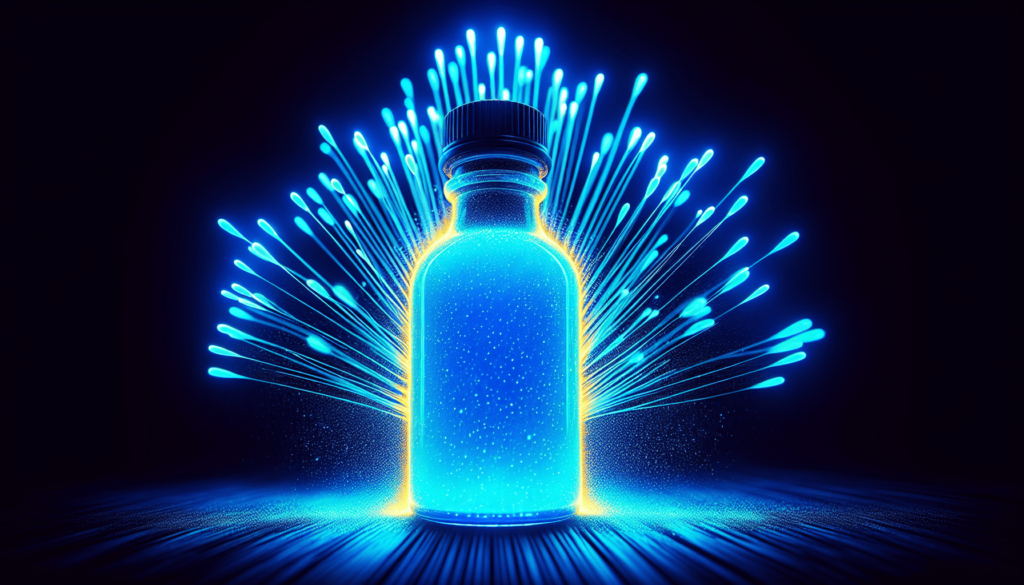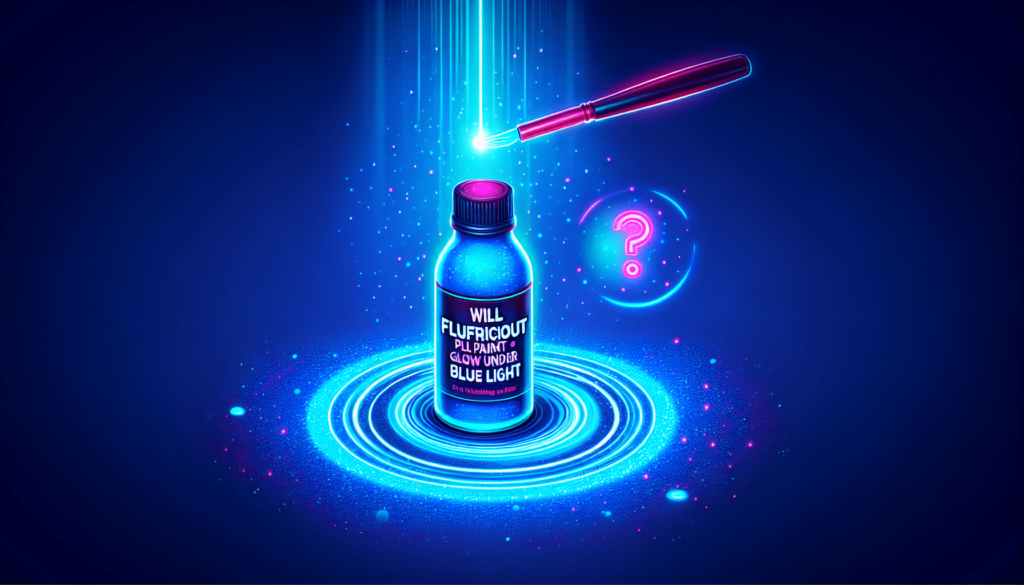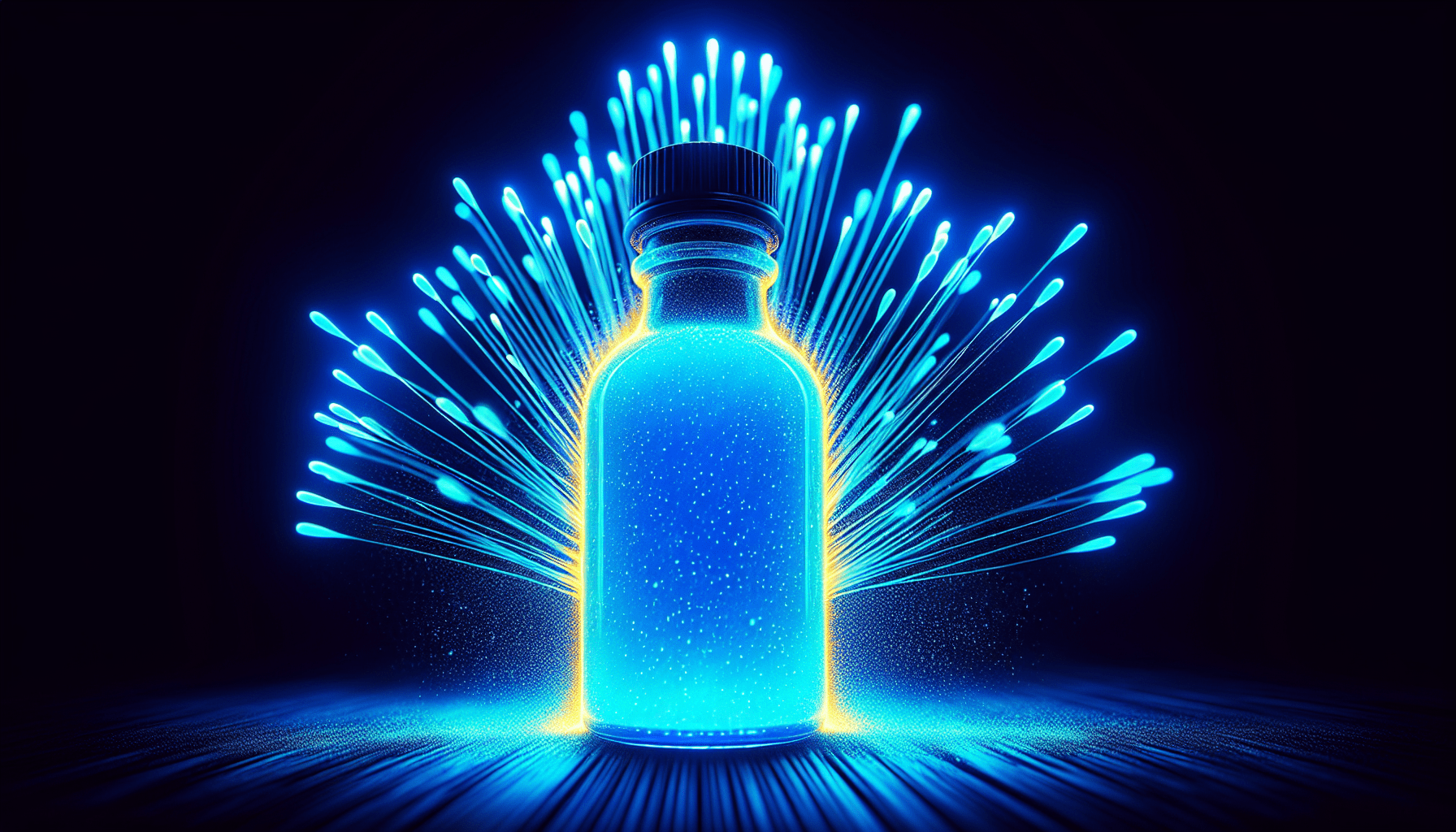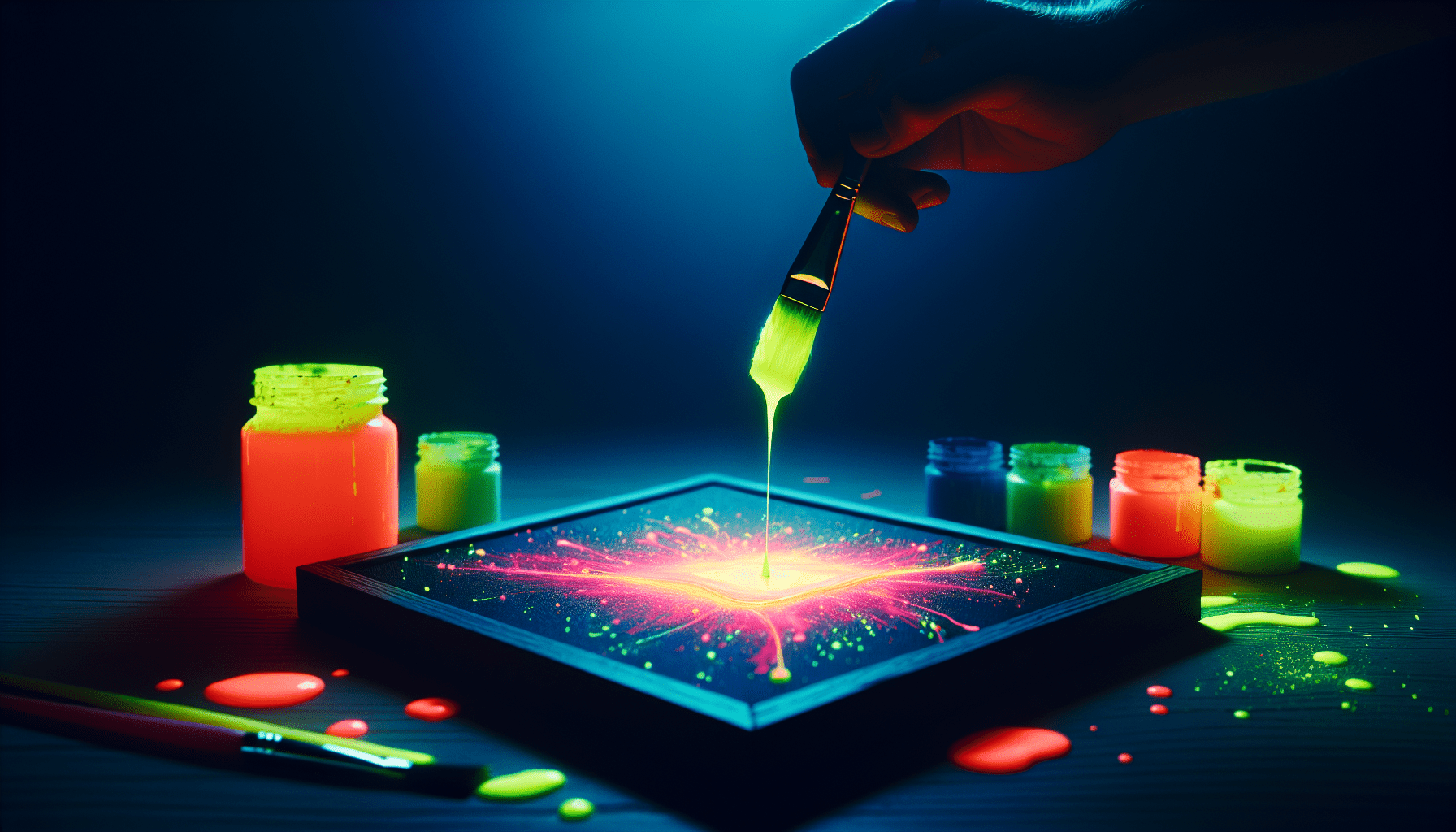Fluorescent paint has long been a fascinating subject for researchers and artists alike. Its ability to emit vibrant, glowing colors under certain wavelengths of light has captivated our imagination. But amidst the intrigue, one question remains: will fluorescent paint glow under blue light? In this article, we will explore the scientific principles behind fluorescent paint and shed light on whether it truly lives up to its luminescent reputation when exposed to blue light. So, get ready to uncover the secrets of this captivating phenomenon and discover if blue truly is the color that will make fluorescent paint come alive. Will fluorescent paint glow under blue light? This question arises when considering the unique properties and capabilities of fluorescent paint. To better understand the phenomenon of fluorescence and its relationship with blue light, it is essential to delve into the definition, characteristics, and common uses of fluorescent paint. Additionally, exploring how fluorescence works, the various types of fluorescent paint available, and the factors influencing fluorescence will shed light on this intriguing topic. Furthermore, we will investigate why fluorescent paint glows under blue light, examine practical applications, discuss limitations, provide tips for maximizing the glow, and emphasize safety considerations when working with fluorescent paint. By the end of this comprehensive article, readers will have gained a thorough understanding of fluorescent paint’s interaction with blue light and its practical implications.

What is fluorescent paint?
Definition
Fluorescent paint, also known as luminous paint, is a special type of paint that exhibits fluorescence. It contains pigments or dyes that are capable of absorbing light at specific wavelengths and re-emitting it at longer wavelengths. This process results in a vibrant, glowing effect under certain lighting conditions, making fluorescent paint highly popular in various industries and applications.
Characteristics
Fluorescent paint possesses distinctive characteristics that set it apart from conventional paints. These include intense brightness, vivid colors, and the ability to emit light without the need for an external power source. Additionally, fluorescent paint is typically formulated to be highly visible, even in low-light conditions, making it ideal for applications where visibility is crucial.
Common uses
The versatility of fluorescent paint lends itself to a wide range of applications. Some common uses include safety signage and markings, artistic and decorative purposes, product branding and advertising, and security applications. Its ability to attract attention and enhance visibility makes it a valuable tool in areas such as construction sites, road markings, stage performances, and retail displays.
How does fluorescence work?
Fluorescent molecules
At the heart of fluorescence lies fluorescent molecules, also known as fluorophores. These molecules possess specific chemical properties that enable them to absorb light energy and re-emit it at longer wavelengths. The structure and composition of the molecule determine its fluorescence properties, including its absorption and emission spectra.
Absorption and emission
When fluorescent molecules are exposed to light, they absorb photons, gaining energy in the process. This absorption causes the electrons within the molecules to move to a higher energy state. Subsequently, these excited electrons release the absorbed energy in the form of photons, emitting light at specific wavelengths. The emitted light is often of a different color than the absorbed light, resulting in the characteristic fluorescent glow.
Stokes shift
One crucial concept in fluorescence is the Stokes shift. This phenomenon refers to the difference between the wavelengths of absorbed and emitted light. In fluorescent molecules, the emitted light has a longer wavelength than the absorbed light, resulting in a shift towards the red or infrared region of the electromagnetic spectrum. The magnitude of the Stokes shift depends on the specific fluorophore and its molecular structure.
Types of fluorescent paint
Standard fluorescent paint
Standard fluorescent paint refers to the traditional type of fluorescent paint that produces a vibrant, glowing effect under various lighting conditions. It is formulated to emit light in the visible range, typically in shades of green, yellow, orange, and pink. Standard fluorescent paint finds applications in safety signage, artistic projects, and decorative purposes where visibility and enhanced aesthetics are desired.
Ultraviolet (UV) fluorescent paint
In contrast to standard fluorescent paint, UV fluorescent paint interacts specifically with ultraviolet light. It absorbs UV light and emits visible light, resulting in an intense glow. UV fluorescent paint is widely used in special effects, art installations, and club lighting, creating an otherworldly or psychedelic atmosphere.
Do fluorescent paints glow under blue light?
Factors influencing fluorescence
The glow of fluorescent paint depends on multiple factors, including the type of fluorescent pigment used, the wavelength and intensity of the incident light, and the interaction between the pigment and the surrounding environment. While blue light can contribute to fluorescence, its effectiveness may vary depending on these influencing factors.
Comparison of blue light to other colors
Blue light occupies a unique position in the visible light spectrum due to its relatively shorter wavelength. Compared to other colors, such as green or yellow, blue light may exhibit different interactions with fluorescent pigments. By understanding these differences, we can better discern the impact of blue light on the fluorescence of paint.

Why does fluorescent paint glow under blue light?
Blue light and energy levels
The interaction between blue light and fluorescent paint is rooted in the concept of energy levels. Blue light possesses higher energy than longer-wavelength light, such as red or infrared light. When blue light illuminates fluorescent paint, it can provide sufficient energy to excite the electrons within the fluorophores, allowing them to move to higher energy levels.
Excitation and emission wavelengths
The excitation and emission wavelengths of fluorescent pigments play a crucial role in their ability to interact with blue light. If the excitation wavelength of a fluorescent pigment aligns with the wavelength of blue light, it can absorb the blue light and become excited. Subsequently, the pigment emits light at longer wavelengths, resulting in a visible glow.
Fluorescent pigments and blue light
Fluorescent pigments specifically designed for blue light illumination are available in the market. These pigments are formulated to interact optimally with blue light, ensuring a vibrant and long-lasting glow. By selecting the appropriate fluorescent pigments, the glow of fluorescent paint under blue light can be maximized.
Practical applications of fluorescent paint under blue light
Artistic and decorative purposes
Fluorescent paint under blue light can create stunning artistic effects, making it a popular choice for art installations, murals, and stage performances. The vibrant glow and unique visual impact of fluorescent paint under blue light can transform ordinary spaces into captivating environments.
Safety and security applications
In safety and security applications, fluorescent paint under blue light enhances visibility and draws attention to important elements. Whether used in emergency exit signs, hazard warnings, or security markings, the fluorescent glow under blue light ensures that critical information is easily identifiable, even in low-light conditions.
Product branding and advertising
Brands and businesses can leverage the visual appeal of fluorescent paint under blue light to create memorable and attention-grabbing advertisements. Whether on billboards, promotional materials, or product packaging, the fluorescent glow adds a striking element that distinguishes and elevates the brand image.
Limitations of fluorescent paint under blue light
Intensity and visibility
While fluorescent paint under blue light can produce a strong glow, the intensity and visibility are subject to various factors. The quality of the fluorescent pigment, the concentration of the pigment in the paint, and the lighting conditions all impact the overall glow. Achieving optimal intensity and visibility requires careful consideration and experimentation.
Color interactions and perception
The color of the surface on which fluorescent paint is applied can influence its perceived glow under blue light. The surrounding colors may interact with the emitted light, resulting in color shifts or variations. Additionally, individual perception of color can vary, affecting how the fluorescent glow is perceived by different viewers.
Tips for maximizing the glow of fluorescent paint under blue light
Choosing the right fluorescent paint
Selecting high-quality fluorescent paint from reputable manufacturers is essential. It ensures that the paint contains fluorescent pigments that are optimized for blue light illumination. Additionally, considering the desired intensity and color of the glow can aid in selecting the most suitable paint for a specific application.
Optimizing lighting conditions
Proper lighting conditions are crucial for maximizing the glow of fluorescent paint under blue light. Controlling the intensity and directionality of the light source, minimizing ambient light, and ensuring adequate contrast between the paint and the surrounding environment can all enhance the overall effect.
Preparation and priming
Preparing the surface before applying fluorescent paint is a key step in achieving optimal glow. Ensure that the surface is clean, smooth, and appropriately primed to allow for proper adhesion of the fluorescent paint. Following manufacturer instructions for surface preparation and paint application will lead to better results.
Safety considerations when working with fluorescent paint
Use of appropriate protective gear
When working with fluorescent paint, it is crucial to wear appropriate protective gear. This may include gloves, goggles, and respiratory protection, depending on the specific paint being used and the application method. Following safety guidelines and using protective equipment minimizes the risk of exposure to potentially harmful substances.
Proper ventilation and workspace
Working in a well-ventilated area is essential when using fluorescent paint. Adequate ventilation helps to disperse any fumes or vapors that may be emitted during the application and drying process. Additionally, maintaining a clean and organized workspace reduces the risk of accidents and facilitates a more efficient workflow.
Storage and disposal
Fluorescent paint should be stored in a secure location, away from direct sunlight and extreme temperatures. Proper labeling and organization can help prevent accidental exposure or contamination. When disposing of fluorescent paint or any associated materials, it is important to follow local regulations and guidelines to ensure safe and responsible disposal.
Conclusion
In conclusion, fluorescent paint can indeed glow under blue light. Fluorescent pigments, absorption and emission spectra, and the specific interactions between blue light and these pigments contribute to the vibrant glow observed. Whether for decorative purposes, safety applications, or product branding, the ability of fluorescent paint to emit light under blue light enhances visibility, attracts attention, and creates visually striking effects. Understanding the factors influencing fluorescence, potential limitations, and safety considerations is crucial for maximizing the glow and utilizing fluorescent paint effectively. By harnessing the power of fluorescent paint under blue light, numerous industries and individuals can create captivating environments, communicate essential information, and leave a lasting impression.



